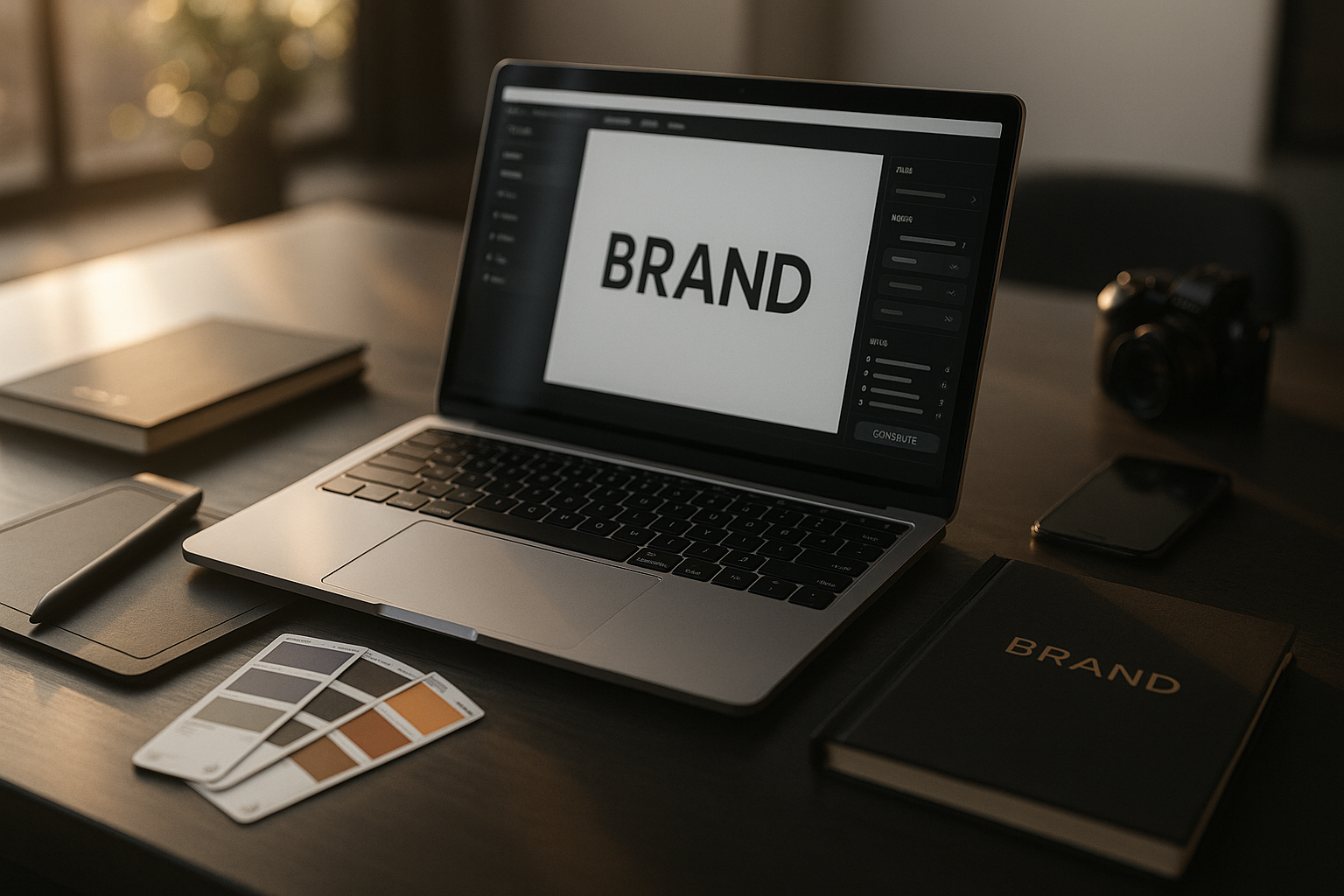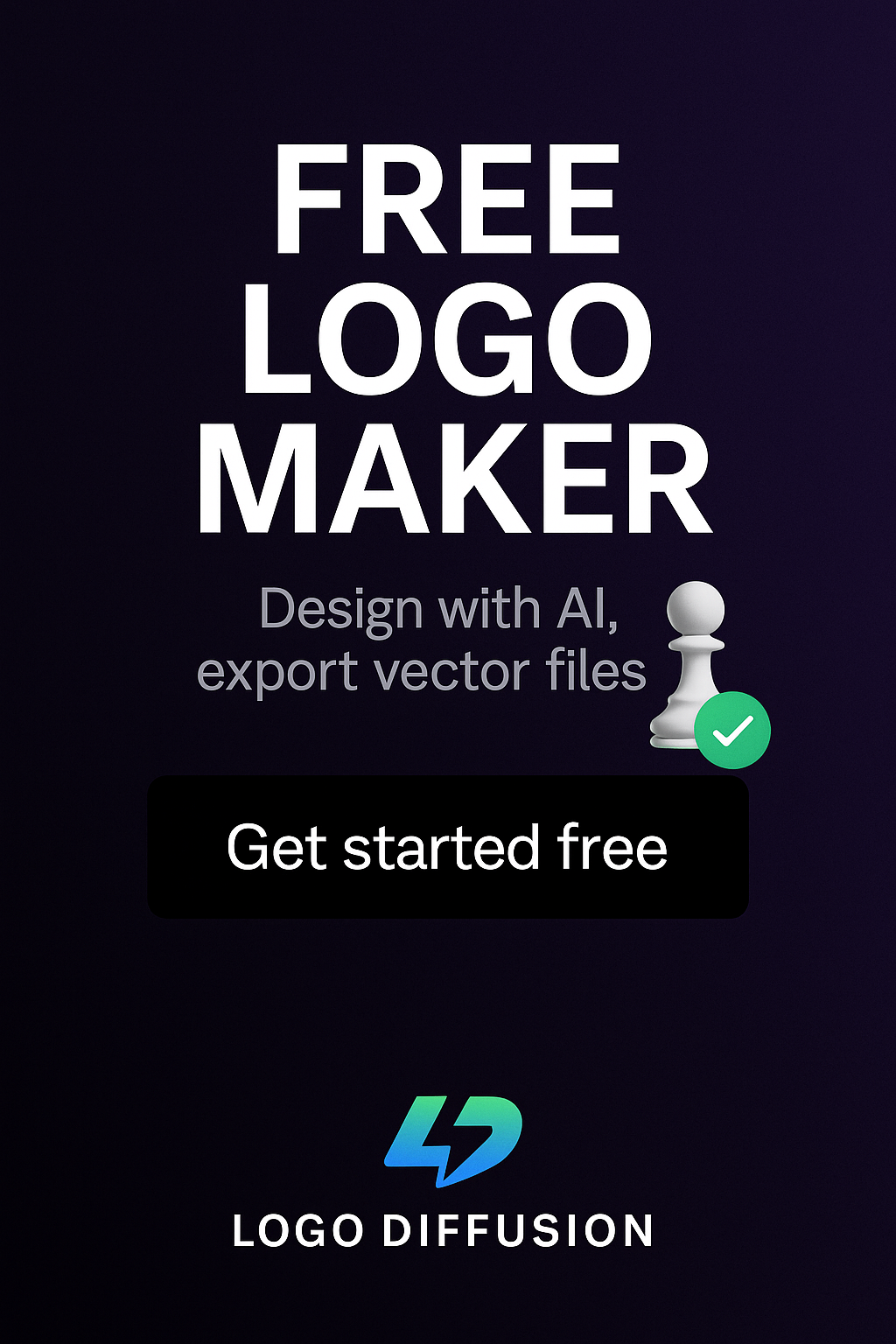

AI is transforming traditional brand guidelines into dynamic, real-time systems. Instead of static PDFs that quickly become outdated, AI tools now manage and update brand assets instantly. Here's how:
- Automated asset creation: Logos, colors, and designs adapt in minutes.
- Real-time compliance checks: Ensure consistency across platforms.
- Instant updates: Changes sync immediately across all channels.
- Multi-platform optimization: Automatically resize and format assets.
- AI insights: Learn and refine brand elements based on usage.
This shift saves time, reduces manual work, and ensures brands stay consistent and relevant in fast-changing markets. Whether it's generating a professional logo, verifying color accuracy, or converting 2D designs into 3D, AI simplifies it all. Ready to see how AI can keep your brand ahead? Let’s dive in.
Key Components of AI Brand Guidelines
Modern brand guidelines now integrate advanced tools to ensure consistency while adapting to evolving business demands. AI-driven solutions play a central role in automating and simplifying brand management.
AI-Powered Logo Design
A logo is the cornerstone of any brand identity. With Logo Diffusion's technology, businesses can create professional logos using text prompts or refine existing sketches with ease.
Here’s what the platform’s AI engine can do:
- Text-to-Logo Generation: Turn written descriptions into polished logos.
- Sketch Refinement: Transform rough sketches into professional designs.
- Style Application: Apply specific design styles while retaining brand elements.
- Vector Conversion: Generate scalable, production-ready assets.
These features streamline logo creation, ensuring a consistent visual identity.
Managing Brand Visuals with AI
AI tools simplify the management of visual assets, ensuring uniformity across:
- Color schemes
- Fonts
- Imagery
- Graphics and design elements
They also handle tasks like background removal and style transfer, ensuring that visuals remain cohesive across platforms.
| Asset Type | AI Management Features |
|---|---|
| Logos | Resizing and format conversion |
| Colors | Palette adjustments and consistency checks |
| Typography | Font matching and alignment |
| Graphics | Style transfer and theme consistency |
Additionally, these tools can convert 2D designs into 3D illustrations, making assets ready for various marketing channels. This automation reduces manual effort while ensuring high-quality, consistent outputs.
With these AI-driven systems, brands can maintain a unified identity across all platforms, supporting real-time updates to their guidelines with minimal effort.
Brand Consistency Through AI
AI is reshaping how brands maintain consistency by actively monitoring and enforcing guidelines across all platforms. It ensures that updates and assets align with established standards in real time.
AI Brand Asset Verification
AI tools can evaluate brand assets to ensure they meet established guidelines. These systems review multiple aspects of design at once, such as:
- Color Accuracy: Verifies that colors match approved RGB/HEX values
- Logo Placement: Confirms correct logo positioning and scaling
- Typography Consistency: Checks for proper font usage and alignment
- Spacing and Layout: Ensures design elements are spaced and arranged correctly
If anything falls out of line, the system flags the issue immediately, stopping inconsistencies before they go live.
| Asset Type | Verification Focus |
|---|---|
| Logos | Position, scaling, and spacing accuracy |
| Typography | Font consistency and adherence to hierarchy |
| Colors | Palette matching and gradient specifications |
| Design Elements | Layout and spacing compliance |
These checks ensure assets meet branding standards, no matter the platform.
Multi-Channel Brand Alignment
AI takes things further by enabling seamless adjustments for multiple platforms, all while keeping the brand identity intact.
Some standout features include:
- Format Adjustments: Automatically resize and optimize assets for different platforms
- Style Consistency: Apply uniform branding styles to all visuals
- 2D-to-3D Transformations: Adapt designs into 3D formats while maintaining brand integrity
- Cross-Platform Checks: Verify a consistent look across various media
The AI system handles these complex changes while preserving essential brand elements like colors, proportions, and layouts, even during transformations like 2D-to-3D conversions.
It also provides tools like:
- Real-time monitoring of asset usage
- Suggestions for adjustments
- Compatibility checks
- Platform-specific optimizations
This process ensures your brand stays consistent and visually aligned, no matter where it appears, completing the cycle of updating and enforcing brand guidelines dynamically.
sbb-itb-384f04f
Updating Brand Guidelines with AI
AI doesn't just ensure brand consistency - it makes updating brand guidelines faster and easier, all while keeping your core identity intact.
Faster Guideline Updates
AI simplifies the process of updating brand guidelines, ensuring changes are applied instantly. Here’s how it helps:
- Real-time updates: Changes are immediately reflected across all digital platforms.
- Instant asset adaptation: New designs automatically align with updated guidelines.
- Quality assurance: Ensures updates meet brand standards across every platform.
For example, Logo Diffusion (https://logodiffusion.com) showcases how AI-driven tools let brands refine their identity with precision.
Keeping Your Brand Consistent Everywhere
As brands grow their digital footprint, AI tools make it easier to maintain consistency across platforms by offering:
- Style matching: Ensures visuals stay consistent across different channels.
- Format adjustments: Automatically optimizes assets for each platform.
- Design scalability: Converts 2D designs into 3D for a stronger digital presence.
- Cross-platform checks: Verifies brand consistency across all touchpoints.
AI also allows brands to experiment with new design variations without losing their core identity. To make the most of this process:
- Identify the unchangeable elements of your brand.
- Define clear guidelines for acceptable variations.
- Track how updated guidelines perform across platforms.
- Use AI insights to refine and improve over time.
This flexible approach stands in stark contrast to the limitations of static brand guidelines.
Static vs. AI Brand Guidelines
Traditional brand guidelines often struggle to keep up with the fast-paced demands of modern branding. In contrast, AI-powered guidelines offer a system that evolves and updates seamlessly.
Comparison: Manual vs. AI Guidelines
Here's a closer look at how static guidelines differ from AI-driven ones:
| Aspect | Static Guidelines | AI-Powered Guidelines |
|---|---|---|
| Update Speed | Takes days or weeks to make updates | Updates happen instantly across platforms |
| Asset Management | Requires manual organization and sharing | Automates organization and provides instant access |
| Version Control | Multiple versions can create confusion | Maintains a single, updated source of truth |
| Format Adaptation | Resizing and reformatting are manual tasks | Automatically adjusts for different platforms |
| Quality Control | Relies on manual reviews | Ensures consistency with AI verification |
| Cost Efficiency | Higher operational costs | Reduces costs in the long run |
| Scalability | Limited by manual processes | Expands effortlessly with brand growth |
| Brand Evolution | Hard to adapt to new trends | Adjusts easily to changing trends |
Static guidelines fall short when brands need to adapt quickly. AI-powered systems simplify this process while protecting the brand's core identity. Key benefits include:
- Consistency: AI tools ensure all assets meet branding standards.
- Speed: Changes are deployed instantly across all platforms.
- Efficiency: Teams can focus on strategic work instead of repetitive tasks.
AI-driven systems also excel at transforming designs to fit various formats and dimensions. This ability makes them an essential tool for brands looking to thrive in a fast-changing digital environment.
Summary
AI-powered brand guidelines are changing how brands are managed by offering real-time updates that keep up with market changes.
Logo Diffusion showcases this shift by using AI tools to simplify brand management. The platform allows for quick asset creation and updates while strictly following brand rules. This ensures consistency across assets and cuts down on manual work.
These advancements bring clear benefits to companies updating their brand guidelines. AI tools handle tasks like automated updates, quality checks, and scaling, making brand management more efficient.
Moving from static to dynamic guidelines highlights how AI is reshaping brand management. By automating routine tasks, these tools let creative teams focus on growing the brand strategically, helping businesses stay consistent and flexible in today’s fast-moving digital world.
Elevate Your Brand with the Ultimate AI Logo Maker




































.png)




